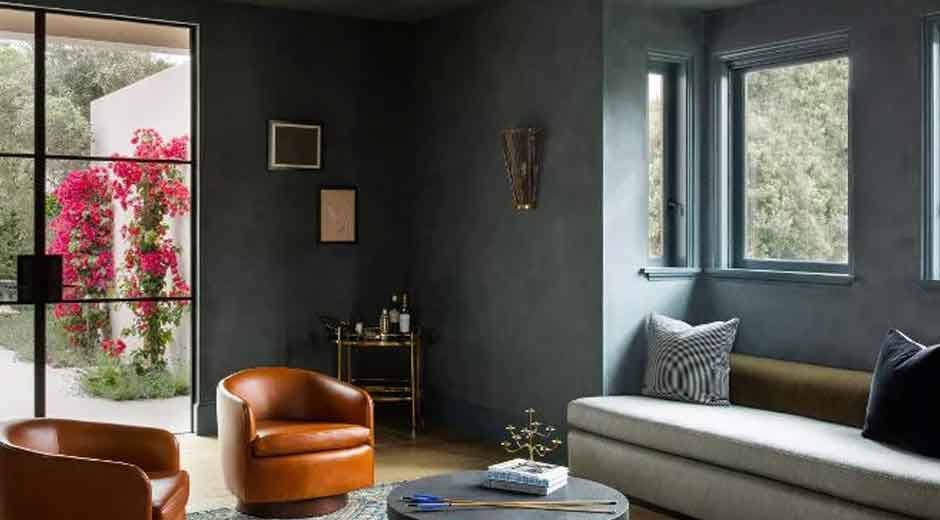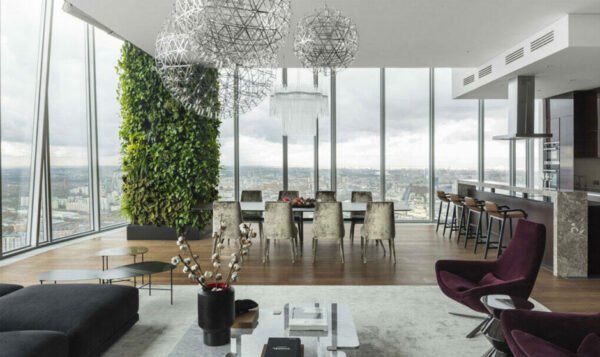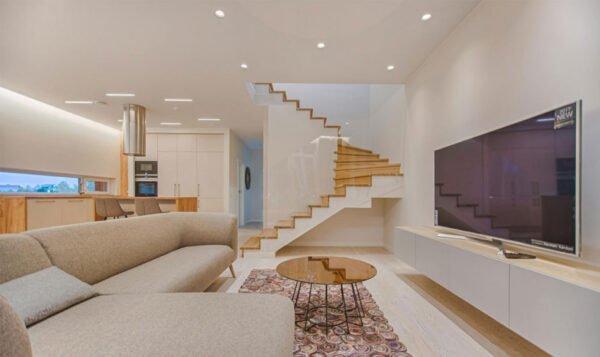Choosing Interior Paint Colors: A Guide To Achieving The Perfect Room Mood

Color is one of the most influential tools in crafting the atmosphere of your home. The choice of paint is never just aesthetic; it can mold your mood and even shape your day-to-day behavior. For example, soft greens in a bedroom can evoke a gentle sense of relaxation after a long day. At the same time, a bold red accent wall in a dining room could encourage conversation and appetite among friends and family. The evidence supporting these insights is not merely anecdotal. According to decades of design studies, including references compiled by well-respected organizations, the psychological effect of color on humans is both real and profound. When painted in muted, natural tones, a family room instantly broadcasts serenity and comfort, making it the perfect gathering place for loved ones. Conversely, energizing shades can be used strategically to motivate productivity, particularly in home offices or workout rooms where focus and drive are key.
Even the most functional spaces benefit from deliberate color choices—a perfect example is hiring a laundry room painter. A once-dark laundry room can be transformed by painting it a light, optimistic hue, making chores feel less like a burden and turning the space into a bright, uplifting corner of the home. These subtle but strategic uses of color have ripple effects, relieving everyday stress and supporting mental well-being without requiring a significant renovation or expensive décor updates.
How Lighting Affects Paint Colors
Interior design often neglects the relationship between paint and lighting. Natural daylight can cause colors to appear cooler and more subdued in the morning, while artificial light sources, such as LEDs, can change how colors are perceived. To avoid surprises, professionals and decorators recommend evaluating color samples at different times of day and under various lighting conditions. This hands-on approach ensures no unexpected outcomes after the painting is completed. For example, a tranquil sage green may look drab and dull under harsh lighting, whereas a soft beige could take on a rich, golden hue in the evening lamplight.
Popular Room Moods & The Paint Colors That Create Them
Creating the right mood for each space starts with identifying how the room will function daily. The colors you choose set the emotional tone, guiding your experience and how guests and family members feel when they enter. Aim for gentle colors like powder blue, sage green, or a peaceful gray if you want a truly sanctuary bedroom. These choices work because cool and muted colors have been shown to lower heart rates, helping the mind and body unwind.
- Calm and Restful:For bedrooms and spa-inspired bathrooms, look for watery blue, misty lilac, or even pale ivory.
- Bright and Energetic:Lively kitchens and kid-friendly playrooms thrive on crisp whites, citrus yellows, or playful turquoise, helping to energize and stimulate creativity.
- Cozy and Inviting:If your goal is comfort in your living space, earthy taupe, warm terracotta, or caramel beige create an inviting setting for movie nights or heart-to-heart chats.
- Modern and Minimal:To achieve a clean and contemporary look, stick with high-contrast palettes, such as snow-white walls with matte black trim or cabinetry.
Remember, trends may inform your choices, but your daily rhythm should guide your ultimate decision. For example, an open-plan dining room with lots of evening activity can benefit from warm, saturated hues that glow under soft lights, fostering togetherness and comfort.
Understanding Undertones: The Secret Ingredient
Undertones are subtle hints of a secondary color that affect the final appearance of paint. They can be the difference between a harmonious design and a color clash. Understanding undertones is crucial for achieving a coordinated look. It’s essential to compare paint samples in your home’s lighting alongside permanent fixtures, as paint chips or photos can mislead the eye due to variations in monitor calibrations and print processes. Even experienced designers often place options side by side to identify the undertones at play.
Choosing The Right Paint Sheen
Paint sheen is how much light a surface reflects, influencing its appearance and functionality. Flat and matte finishes are best for bedrooms and ceilings, creating a soft, non-reflective surface. On the other hand, eggshell and satin finishes provide a subtle shine, making them ideal for high-traffic areas. Semi-gloss and gloss finishes are perfect for kitchens because they are easy to clean and moisture-resistant. Additionally, the sheen level can affect colors; for instance, gloss finishes can make a deep blue color stand out, while matte finishes have a more understated look. Choosing the right sheen enhances the color and ensures lasting durability.



![How to Make Your Home Office Comfortable in Any Season [Image Source] Working from home has become the new normal for many people. Whether it’s full-time or just a few days each week, a lot of us have turned spare bedrooms, garages, or corners of the living room into offices. While setting up a work-from-home space is easy in theory, making it a place you actually want to spend time in takes a little more thought. Comfort goes beyond a desk and a chair. It’s about lighting, temperature, air quality, and the overall feel of the space. When the room is too hot in the summer or freezing in the winter, it’s hard to stay focused. The wrong setup can leave you distracted, tired, and less productive. In this article, you’ll learn how to create a home office that feels comfortable no matter the season. These tips don’t require a complete renovation or a huge budget. They’re practical changes you can make now to upgrade your space and feel better throughout your workday. Choose the Right Heating and Cooling Setup Temperature plays a big role in how comfortable your office feels. If you’ve ever worked in a room that doesn’t stay warm in the winter or cool in the summer, you know how distracting that can be. A small change in temperature can affect your mood, focus, and even how your body feels after sitting for hours. Some home offices are in places that weren’t originally meant for year-round use—like finished basements, sunrooms, or attic spaces. These rooms often don’t get enough airflow from your home’s main heating and cooling system. That leads to hot spots in summer and cold zones in winter, which can make working from home feel like a chore. One way to handle this is by installing ductless mini-split systems. These allow you to control the climate in just one room without relying on your main HVAC system. They’re energy-efficient, easy to install in finished or unfinished spaces, and perfect for areas where running new ductwork isn't ideal. With a mini-split system, you can heat or cool your office independently from the rest of the house. That means you won’t waste energy adjusting the entire home just to stay comfortable during work hours. If you like your office cooler than the rest of the house—or if you’re using a room that’s always too hot—this gives you full control. These systems are also quiet, which helps if you're on video calls or need to concentrate without background noise. Instead of noisy window units or floor heaters, you get clean, steady temperature control without the hum or rattle. When your office stays at the right temperature all day, you’re more likely to stay focused, feel better, and get more done. Maximize Natural Light and Supplement Wisely Natural light can help you feel more alert and focused throughout the day. If possible, place your desk near a window. Morning sunlight boosts mood and energy, and exposure to natural light during the day can support better sleep at night. That said, natural light isn't always available—cloudy days, early mornings, or late evenings can make your office feel dim. Supplement with good-quality LED lighting. A desk lamp with adjustable brightness can help reduce eye strain. You can also add soft overhead lights for a balanced look that isn’t too harsh. Layering your lighting makes the space feel more comfortable. Combine ambient lighting with focused task lighting to create the right balance between visibility and relaxation. Use Smart Window Coverings Your windows play a big part in how well your office stays warm in the winter and cool in the summer. The right window coverings help block out heat during hot months and hold in warmth during colder ones. Blackout curtains or thermal blinds are a great choice for year-round comfort. In summer, they help keep the room from overheating during the day. In winter, they act as an extra barrier between your office and the cold air outside. Light-filtering shades are another option if you want to keep things bright while still reducing glare and heat. These coverings help manage indoor temperature without making the room feel closed off or dark. Add Functional Comfort Items Comfort doesn’t stop at temperature. The furniture and accessories you choose also affect how your body feels after hours at your desk. Start with your chair. It should support your back, allow your feet to rest flat on the floor, and adjust to your height. You don’t need a luxury brand—just something that helps you sit comfortably for long periods. A footrest can also help you relax your legs and improve posture. Placing a soft rug under your desk adds warmth and padding, which helps in both cold and hot seasons. Think about wrist support, desk height, and screen position. Small accessories like a keyboard tray or monitor stand can help reduce strain on your neck and shoulders. The goal is to stay comfortable without feeling stiff or sore by the end of the day. Improve Air Quality and Humidity Control Air quality plays a huge role in comfort and health. If your home office feels stuffy or stale, you might need to improve air circulation. A small air purifier can help reduce dust, pet dander, or allergens, especially useful in closed-off spaces. In winter, the air tends to get dry, which can cause dry skin, throat irritation, or even static shocks. A humidifier adds moisture to the air and helps you breathe better. In summer, excess humidity can make the room feel sticky and uncomfortable. In that case, a dehumidifier helps keep things in balance. Clean air and proper humidity levels support better focus and overall well-being, which makes your workday more productive. Keep Distractions Low with Sound Control Noise distractions can break your concentration fast. If your home office is near a busy street, a loud TV, or shared walls, you might need to block out sound. Start by adding soft materials like rugs, curtains, or fabric wall panels. These help absorb sound and reduce echo. You can also use a white noise machine or a fan to mask background noise during meetings or focus sessions. For windows and doors, add draft blockers or weather stripping to limit sound coming from outside. If you use video calls often, having a quiet space helps you speak and hear more clearly. A comfortable home office helps you work better through every season. With the right setup, you can stay focused and feel good during long hours at your desk. From smart heating and cooling to better lighting and air, small changes go a long way. Create a space that supports your goals—one that works for you all year.](https://lucykingdom.com/wp-content/uploads/2025/05/How-to-Make-Your-Home-Office-Comfortable-in-Any-Season-600x357.jpg)